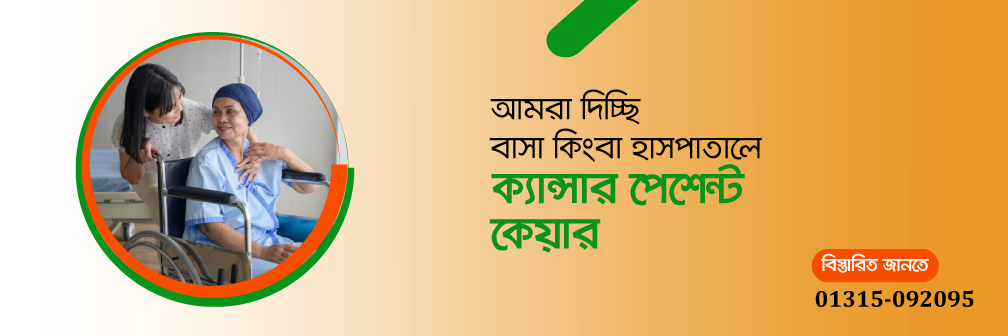
The skilled team of Maisha Care Limited is always active with Home Nursing Service in Bangladesh . We have the skill and trained Patient Care Attendants and Diploma / B.Sc. Nurses who will provide 8/12/24 hours of service at the patient home in the hospital. We send three types of nurses to serve patients.
1) Diploma and B.Sc. Nurse.
2) Patient Care Attendant.
3) Paramedical.
Diploma and B.Sc. Nurse: Diploma and B.Sc. nurse/Brother means those with an academic certificate. Diploma and B.Sc. nurses/ Brothers is salary a little more.
PCA: – PCA mean those with no academic certificates. A nurse does, and a PCA ( means Patient Care Attendant) does. We have the skill and trained Patient Care Attendants and Diploma / B.Sc. Nurses who will provide 8/12/24 hours of service at the patient home in the hospital. Nursing Home Service BD.
Paramedical:- This service includes being able to perform a doctor’s prescription blood test, X-ray, ultrasound or various scans. Even doctors cannot treat a patient without this test report. Those who work in this category are called paramedics. The name of this course is Paramedical Course. You will get so much from us. You can also provide a paramedical caregiver for a patient in your home or hospital. Nursing Agency BD.
We take care to meet the improved needs of your loved ones at home to improve their health and happiness. Traditional internal care allows your loved ones to get the help they need without sacrificing their freedom. If your loved one is healthy, you may be able to meet his or her needs, but if you are ill, you can hire a caregiver/nurse to help provide them with the help they need. However, there are times . Home care services in Dhaka। Online nurse service.
Cancer is a group of diseases involving abnormal cell growth with the potential to invade or spread to other parts of the body. These contrast with benign tumors, which do not spread. Possible signs and symptoms include a lump, abnormal bleeding, prolonged cough, unexplained weight loss, and a change in bowel movements. While these symptoms may indicate cancer, they can also have other causes. Over 100 types of cancers affect humans. Tobacco use is the cause of about 22% of cancer deaths. Another 10% are due to obesity, poor diet, lack of physical activity or excessive drinking of alcohol.
Other factors include certain infections, exposure to ionizing radiation, and environmental pollutants. In the developing world, 15% of cancers are due to infections such as Helicobacter pylori, hepatitis B, hepatitis C, human papillomavirus infection, Epstein–Barr virus and human immunodeficiency virus (HIV). These factors act, at least partly, by changing the genes of a cell. Typically, many genetic changes are required before cancer develops. Approximately 5–10% of cancers are due to inherited genetic defects. Cancer can be detected by certain signs and symptoms or screening tests. It is then typically further investigated by medical imaging and confirmed by biopsy.
The risk of developing certain cancers can be reduced by not smoking, maintaining a healthy weight, limiting alcohol intake, eating plenty of vegetables, fruits, and whole grains, eating resistant starch, vaccination against certain infectious diseases, limiting consumption of processed meat and red meat, and limiting exposure to direct sunlight. Early detection through screening is useful for cervical and colorectal cancer. The benefits of screening for breast cancer are controversial. Cancer is often treated with some combination of radiation therapy, surgery, chemotherapy and targeted therapy.
Pain and symptom management are an important part of care. Palliative care is particularly important in people with advanced disease. The chance of survival depends on the type of cancer and extent of disease at the start of treatment. In children under 15 at diagnosis, the five-year survival rate in the developed world is on average 80%. For cancer in the United States, the average five-year survival rate is 66%. In 2015, about 90.5 million people worldwide had cancer. In 2019, annual cancer cases grew by 23.6 million people and there were 10 million deaths worldwide, representing over the previous decade increases of 26% and 21%, respectively.
The most common types of cancer in males are lung cancer, prostate cancer, colorectal cancer, and stomach cancer. In females, the most common types are breast cancer, colorectal cancer, lung cancer, and cervical cancer. If skin cancer other than melanoma were included in total new cancer cases each year, it would account for around 40% of cases. In children, acute lymphoblastic leukemia and brain tumors are most common, except in Africa, where non-Hodgkin lymphoma occurs more often. In 2012, about 165,000 children under 15 years of age were diagnosed with cancer. The risk of cancer increases significantly with age, and many cancers occur more commonly in developed countries. Rates are increasing as more people live to an old age and as lifestyle changes occur in the developing world. The global total economic costs of cancer were estimated at US$1.16 trillion per year as of 2010.